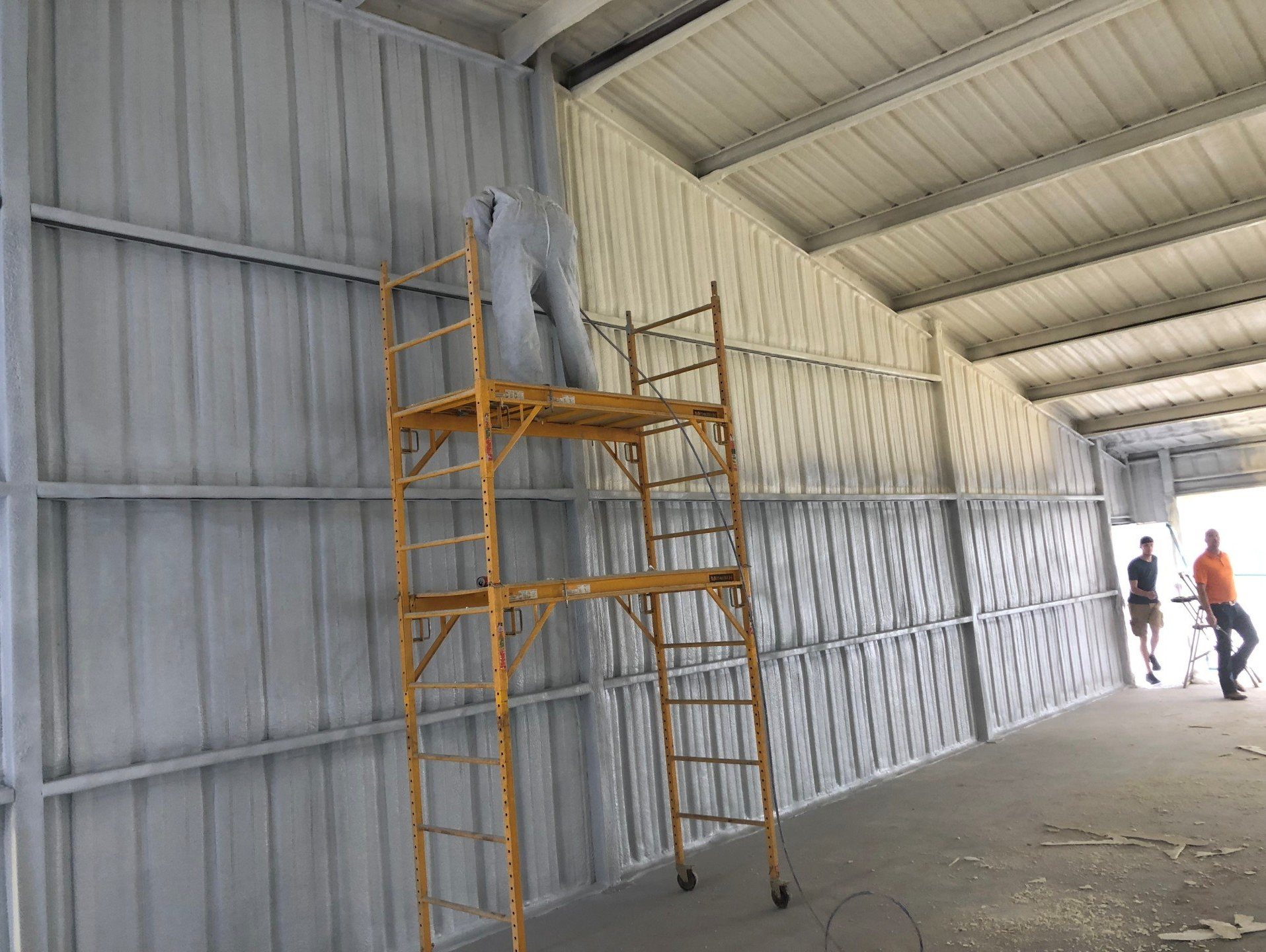Exceptional quality you can trust
Serving East Texas
Commercial Insulation
Commercial Insulation
Family Owned | Over 30 Years of Experience | Satisfaction Guaranteed
Family OwnedOver 30 Years of ExperienceSatisfaction Guaranteed
Insulate Your Building to Increase Comfort and Energy Efficiency
While evolving building codes continue to push structures towards greater energy efficiency, constructing a building "just to code" isn't going to give you the best value for your money. At Rankin Insulation, we believe in exceeding the minimum standards to provide you with higher levels of value and comfort.
Buildings that we install insulation in can achieve better energy efficiency, are quieter, and are healthier for occupants. These things can give your business a real competitive advantage! Contact us for the professional insulation solutions you need at affordable prices. Our team is fully certified. Se habla Español.

Slide title
Write your caption hereButton
Slide title
Write your caption hereButton
Slide title
Write your caption hereButton
Slide title
Write your caption hereButton
Slide title
Write your caption hereButton
Discover the Importance of Quality Insulation
Greater Energy Efficiency and Lower Energy Bills
An energy-efficient building saves you money on energy bills and reduces power plant CO2 emissions, lowering your carbon footprint. As energy bills continue to rise, energy efficiency becomes more and more valuable to business owners.
For the last several years, more than a dozen major metro areas in the US have enacted commercial and multifamily energy benchmarking requirements. This means that existing buildings have to report on their annual energy usage, and receive scores ranging from 0 to 100, based on their performance.
These scores are often made public, and disclosure is required for any real estate transactions that could influence prospective buyers and tenants.
As energy efficiency continues to have more of an impact on building transactions, savvy commercial building professionals are recognizing and capitalizing on this trend with buildings that are designed and constructed to exceed codes and stand out from the competition.
Meeting Occupant Needs for Comfort
Thermal comfort has a big impact on occupant satisfaction. When your building is uncomfortable or has significant temperature control issues, you'll typically have to deal with disgruntled occupants. Insulation and air sealing are key components to driving thermal comfort.
Meeting building codes isn't a guarantee of comfort. ASHRAE has separate standards for meeting occupant expectations for thermal comfort: ASHRAE Standard 55-2013.
It's easy to assume that localized control of heating and cooling is the answer to indoor climate control, but without proper insulation and air sealing, heat will always move to cold areas. This means that occupants have to use even more energy to stay comfortable.
Acoustic Impact
There's a great deal of evidence showing that noise and workplace productivity and satisfaction are deeply connected. A recent survey conducted by Cambridge Sound management shows us that 30% of office workers are distracted by the conversations of others.
Another survey shows that 60% of office employees report being more productive in a quiet work environment.
As trends continue towards more open workspaces, the need for floating walls and glass elements grows. Similarly, so does the issue of noise.
Acoustic design is a complex science that depends on many factors, including the type of building, the location, and the occupancy. Insulation alone can't always deliver a quiet workspace but is an essential part of acoustic design solutions. Different insulation types should be compared for their acoustic properties during the planning process.
Sustainability and Responsibility
In 2015, an estimated 40% to 48% of new non-residential construction was green. As of August 2015, 13.8 billion square feet of building space is LEED certified. Additionally, lease rates for green spaces are up to 20% above average, and we see higher rental prices and decreased vacancy rates.
Comparing and choosing which type of insulation is used in your building is very important for sustainable construction designs. The right insulation contributes to lower energy use, improved indoor air quality, and higher levels of comfort.
Certain types of insulation can also contribute to requirements related to recycled content and the minimization of GHG emissions.
972-207-6320
Quick Links
Our Service Area
Serving East Texas
Contact Us
Rankin Insulation
3111 Vz County Road 2301
Canton, TX 75103
972-207-6320
Canton, TX 75103
Privacy Policy
| Do Not Share My Information
| Conditions of Use
| Notice and Take Down Policy
| Website Accessibility Policy
© 2024
The content on this website is owned by us and our licensors. Do not copy any content (including images) without our consent.


